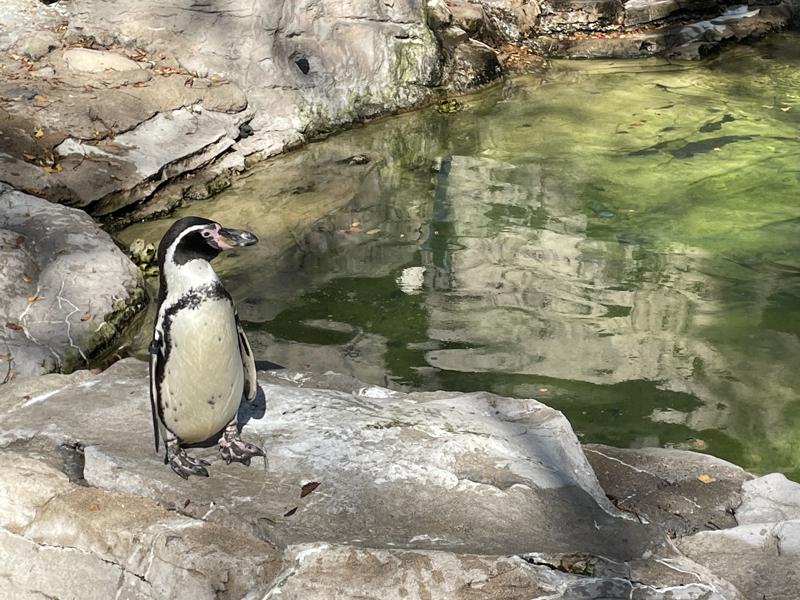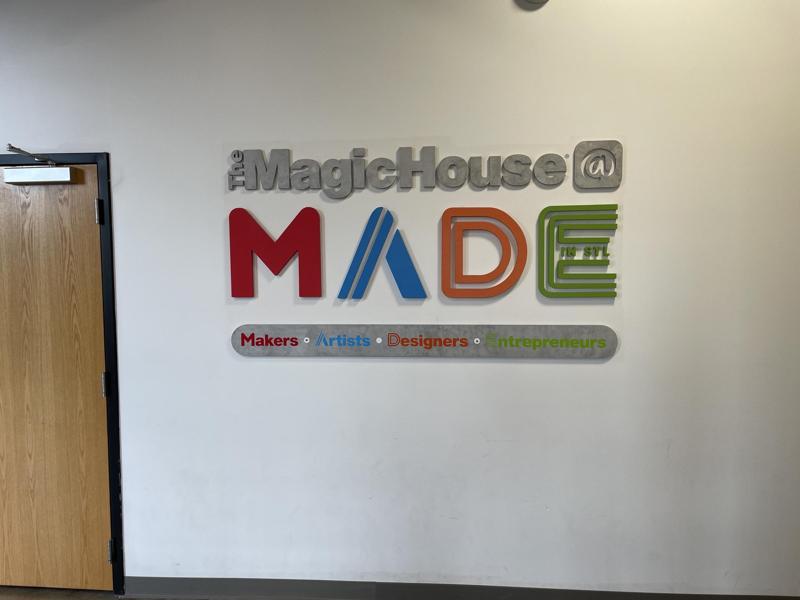The Pulitzer Art Foundation Takeaway. The Pulitzer Arts Foundation feels like the kind of place you discover by accident. The quiet and concrete are surprisingly calming, with the art being surprisingly inspiring. I'd give it an 8.4/10 for its atmosphere and design alone. While the size of the building limits the scale of the exhibits, the architecture, light, and sense of stillness make it more of an experience than a gallery visit.
It's not flashy. But it's one of those spots that rewards a slow walk and an open mind. If you're looking for a low-key afternoon in St. Louis, especially paired with lunch nearby at Bowood or a visit to the Contemporary Art Museum next door, the Pulitzer is absolutely worth a visit.
Just know that "Foundation" doesn't scream "museum," parking can be a little sneaky, and there's no café or gift shop waiting for you at the end. But free parking, free admission, and open Wi-Fi make it one of the easiest, most peaceful cultural detours in the city.

Pulitzer Arts Foundation Experience Summary
I went to the Pulitzer Arts Foundation on a sunny Wednesday afternoon, planning to grab lunch afterward at Bowood by Niche. It's tucked right behind the Contemporary Art Museum, and somehow, I had no idea they were next-door neighbors. Even Google Maps didn't help much--it looked like I was pulling into the Contemporary's parking lot when I was actually headed for the Pulitzer. They really need better signage.
And speaking of names, "Pulitzer Arts Foundation" sounds more like a grant program than a museum. Add the word "museum," please. I was definitely second-guessing if I was even in the right spot until I saw the placard out front.
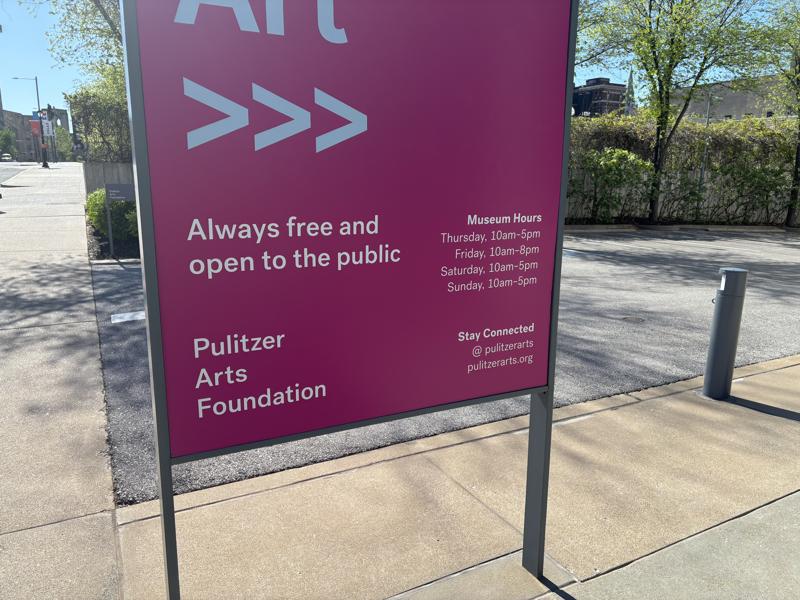
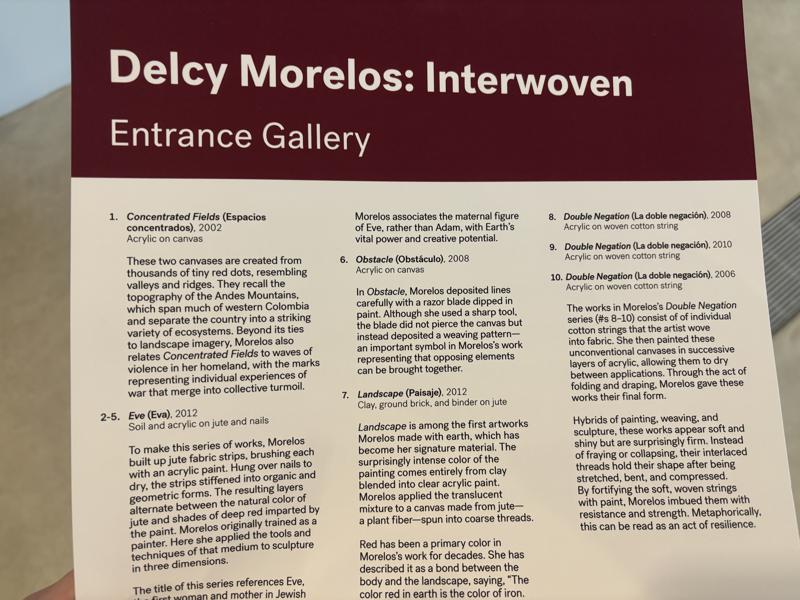
Once inside, though, confusion gave way to calm. The building is pure modern minimalism--gray concrete walls, open spaces, and ceilings that shoot up twenty or thirty feet high. It's the kind of architecture that feels almost spiritual in its simplicity. The space itself is as much the art as anything hanging on the walls.
There wasn't much on display--just one main artist spread across three rooms, plus a small video exhibit downstairs. Video installations aren't really my thing, so I breezed through that part. But the main exhibit? It was worth lingering.
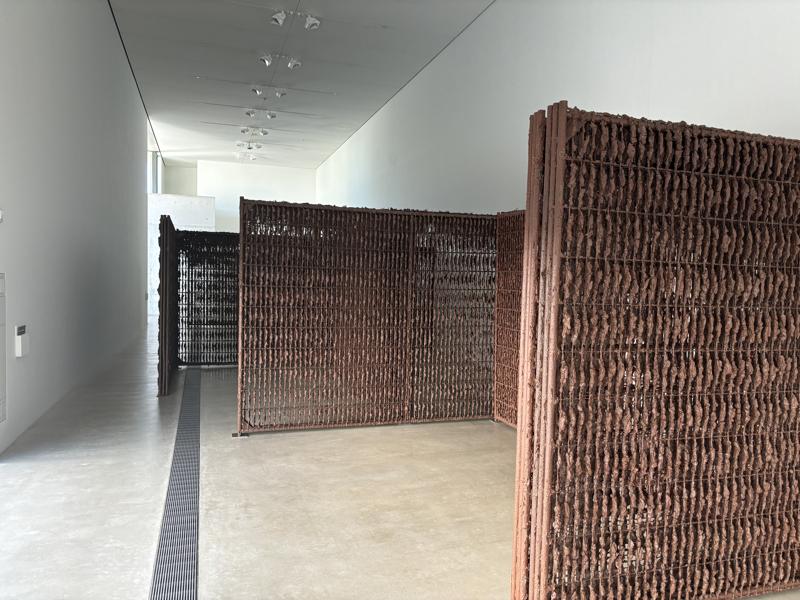

The artist used natural materials--clay, dirt, even spices like cinnamon and clove--to create these rich, earthy textures. The whole room smelled incredible, like someone baked art into the air. My favorite part, though, wasn't even a piece of art. It was the outside courtyard that connects the two wings of the building. There's a shallow pond that ripples with the wind, and when the breeze moves through, you can actually *see* it travel across the water.
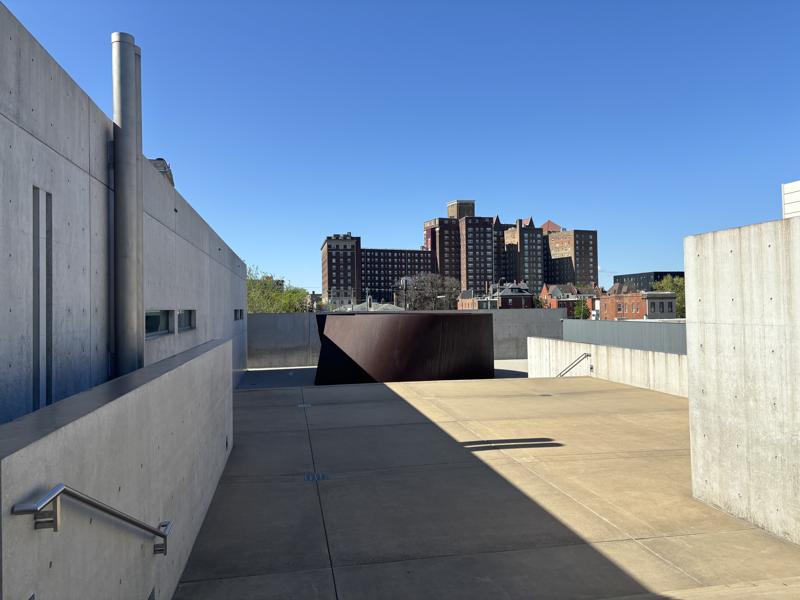


I sat there for over an hour, laptop out, soaking it all in. The Wi-Fi was solid at 20 to 25 Mbps, which is more than enough for emails and deep work.
Not a bad office for the day.
Then there was this massive two-tone canvas, at least 30 or 40 feet tall. Just two solid colors, but enormous. It completely dominated the staircase leading down to it, and from a distance, it felt like stepping into a void.
Even the stairs themselves became part of the illusion. Because the colors all matched, some of the steps seemed to disappear as you walked.

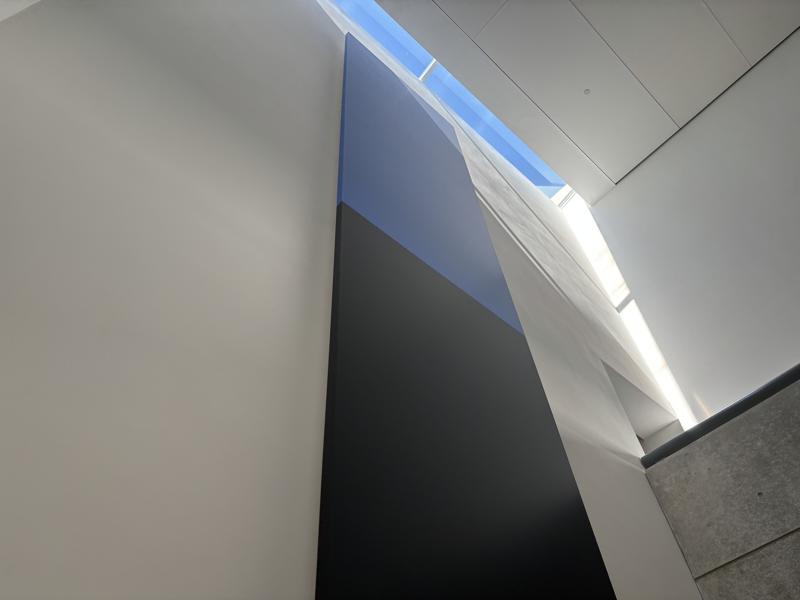

The staff were great. They clearly loved the place. I was the first visitor when they opened at 10 a.m., and they seemed genuinely excited to have someone to chat with.
Upstairs, there's a small rooftop patio and a "library".
And by library, I really just two shelves of books, one for kids and one for adults. If you're into art books or just want a quiet corner to read, it'll do.

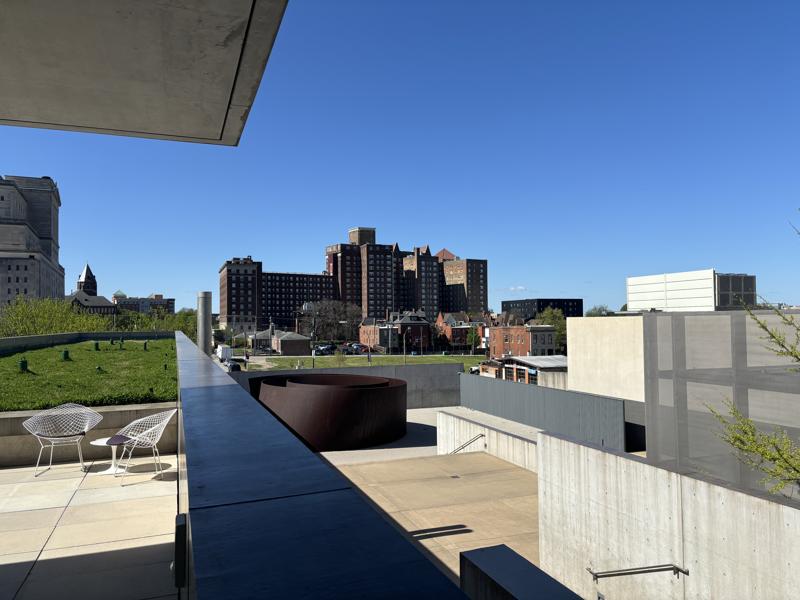
Outside, you'll find a large metal spiral sculpture that you can actually walk through. As you get to the center, the walls twist and dip just enough to mess with your perspective. It's a neat sensory trick that makes the whole space feel alive.
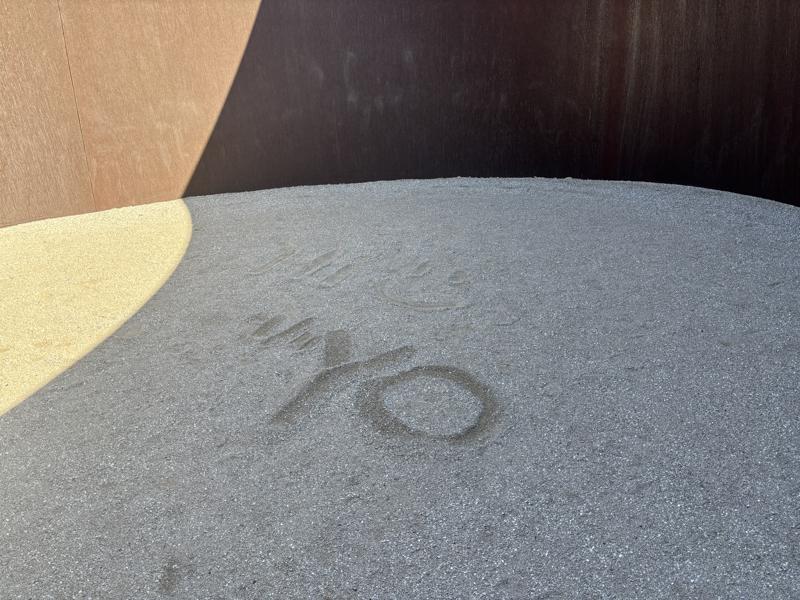
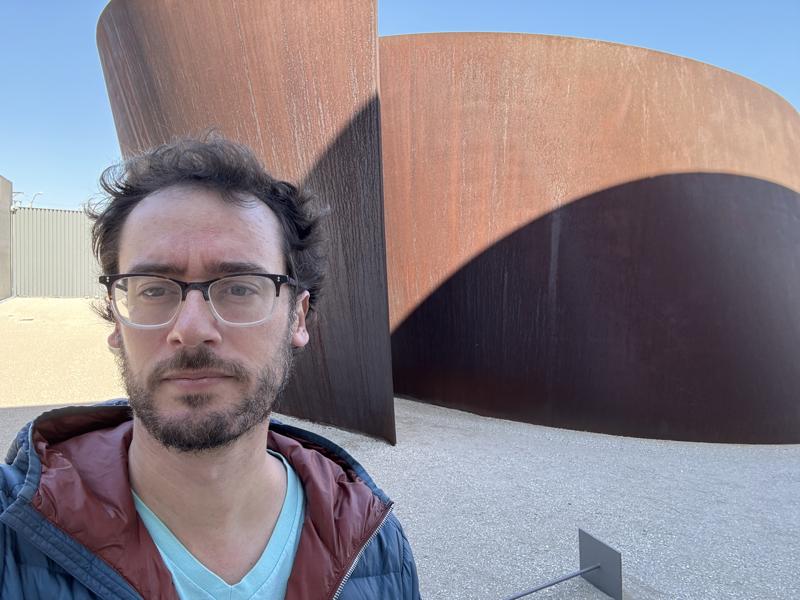
Overall, the Pulitzer isn't trying to impress with quantity. It's about the quality of space. It's peaceful, architectural, and oddly grounding.
A half-hour visit easily turned into a two-hour stay, and I didn't mind one bit.
Pulitzer Arts Foundation Things To Do
If you go, make time to explore both the Pulitzer and the Contemporary Art Museum next door. They're literally separated by a fence, and both are free. Each takes about 30 minutes to walk through, making them a perfect pair for an easy afternoon of art-hopping.
Just note: there's no café or gift shop at the Pulitzer. If you're hoping for a post-gallery latte, head to Bowood down the street. It's an easy add-on and one of the best lunch spots in Midtown.
Pulitzer Arts Foundation Details And Info
The building itself is a highlight with its stark concrete, open light, and precise geometry everywhere. It's the kind of space that makes you whisper without realizing it.
Inside, backpacks aren't allowed, which apparently is a pretty standard St. Louis museum rule I never knew. But lockers are provided, and the staff will store your bag if needed. The bathrooms are clean, Wi-Fi is fast enough, and there's even a little water fountain tucked near the main entrance.


Parking At Pulitzer Arts Foundation
Parking is free and easy once you find it--but that's the trick. The dedicated lot is tucked behind the building and can be easy to miss. You'll probably have to drive past and loop back down a side street to get in. Once you do, though, it's painless. Street parking is also available.


Pulitzer Arts Foundation Receipt























